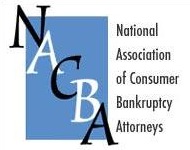
In law enforcement, BOLO stands for Be On the Look Out. But even outside of law enforcement, BOLO alerts operate. In this case, we as bankruptcy lawyers need to be on the look out for community property.
It’s easy to think that community property is an issue only for practitioners in the 9 community property states: Arizona, California, Idaho, Louisiana, Nevada, New Mexico, Texas, Washington, and Wisconsin. But in truth, the movement of the married and the formerly married in and out of community property jurisdictions can bring commuity property to a bankruptcy court near you even if you don’t practice in one.
Why community property matters
Because of the unique treatment of community property in bankruptcy, spotting community property when the case is to be filed in a non-community state is critical. The characterization of property as community impacts the liquidation analysis, the distribution to creditors, and the scope of the discharge in a single spouse filing.
These statutory principles are at work:
- all of the community property becomes property of the estate, even if only one spouse files. 541(a)(2).
- Special rules determine which creditors get paid from community property 726(c)
- After acquired community property gets the benefit of a discharge awarded one spouse 524(a)(3)
When we look at community property in non-community property states, we find the topic is large and the case law small. So here we’ll look at a framework for analyzing the issues that drive the treatment of community property when you spot it. The analysis must be expanded in light of the community property law in the state in question.
Foundational law
We know that state law controls characterization of property. Butner, 440 U.S. 48 (1979). The community property system can differ a bit from state to state, but the essence of the scheme is the idea that all the assets acquired during the marriage of residents of the state belong equally to both spouses, regardless of which spouse earned the money.
For simplicity going forward here, my points of reference are grounded in California community property law; it’s necessary to check the particular community property laws of the state in question, particularly with respect to the liability of community property for pre marital debts and when an estranged couple ceases to acquire community property. For example,
- California community property is liable for each spouses’ debts incurred prior to marriage. (CA Family C. 910); Nevada community property is not so liable. Field, 440 B.R. 191 (Bankr. D. Nev. 2009)[includes good overview of NV cp system]
- California couples’ earnings after marital separation are not community. CA Family C. 771.
Creditors of the couple can satisfy the debt of either spouse from the community property. Because creditors have rights in both “halves” of the marital community, all the community property comes into the estate ( Bankruptcy C. 541(a)(2)), and all of the creditors with community claims (Bankruptcy C. 101(7)) can participate in a bankruptcy case, even when only one spouse files.
The definition of “community claim” has been explained as follows:
“Unlike a claim, a “community claim” is a debt owed by the debtor or the debtor’s spouse, which under state law could have been satisfied from community property that would have passed to the debtor’s bankruptcy estate, whether or not such property existed at the commencement of the case.
Thus, three criteria must be met before an obligation has the status of a community claim: (1) it must be a debt owed by one of the spouses; (2) it must be satisfiable from community property under applicable state law; and (3) the community property from which the debt could be satisfied under state law must be included within the assets which would pass to the debtor’s bankruptcy estate, whether or not such assets exist at the commencement of the case. (Alan Pedlar, Community Property and the Bankruptcy Reform Act of 1978, 11 St Mary’s L J 349, 351-52 (1979) (emphasis in original).” quoted in Sweitzer, Bankruptcy No. MM7-88-03040, Bankr, W.D. Wisconsin. 111 B.R. 792 (1990).
Accordingly, the issue of which spouse contracted a debt and created a personal legal liablity becomes meaningless with respect to community property in bankruptcy.
Is it (still) community property
The necessary analysis is multi-part:
- Is it community property?
- Is all of the asset community? and
- When spouses separate, does it remain community?
Is it community? The standard community property system’s provision is that all property acquired during marriage is community. Query: how does the community property system in question treat contrary provisions created in the form of title? The California Supreme Court recently held that the presumption of community property prevails over the form of title, as explained in Brace, 9 Cal. 5th 903 (2020). The Braces owned property acquired during marriage as joint tenants, historically held to be the separate property of each married co owner. The Brace court held otherwise, finding that taking title as joint tenants did not defeat the community property presumption. Thus, in the bankruptcy of Mr. Brace, the entirety of the couple’s joint tenancy property holdings became property of the estate.
California, by Family Code 125 , alters the characterization of marital property acquired in a common law state when both parties move to California: Property acquired by a married couple when living elsewhere is “quasi community property” when the couple is living in California. There’s a different result when only one spouse now lives in California.
Community property is enduring, withstanding a move to another state. “[C]ommunity property retains its community character when a couple moves from a community to a noncommunity state.” Restatement of Trusts, quoted in Olsen v. Reuter (In re Reuter) 499 B.R. 655 (Bankr. W.D. Mo. 2013).
In Fava v. Freeman, Case 24-01002-JDW (Bankr. ND MS,10/22/24), a Mississippi bankrutpcy court applied that general rule that community property retains its community character, even when one spouse moves to a common law state. The court found that when a Mississippi spouse filed bankruptcy without his spouse, the debtor’s CA home acquired during marriage and occupied by a long-separated but still married spouse, was community property and thus it came into the bankruptcy estate.
What effect is given separate property contributions? The next point of inquiry is how applicable law treats separate property contributions to the acquisition of that property? Does such a contribution of separate property to an asset acquired during marriage and thus presumptively community create an ownership interest in the asset that is not community property? Again, the 9th Circuit in Mantle, 153 F.3d 1082, 1084 (1998) held that one spouse’s right of reimbursement for separate property contributions to acquisition of the family home , available in divorce, was merely a claim in the bankruptcy of one spouse and not an ownership interest.
When does property cease to be community? When the spouses have separated, the situation may change, depending on state law. Property acquired after separation is separate property. But, the proceeds and profits from community property remain community.
Two paths lead to the division of the community that alters the quantum of property that comes into the bankruptcy estate as being liable for a claim against the debtor or the debtor’s spouse 541(a)(2)(B). One is a transmutation that complies with applicable requirements for a change in the character of property. Brace.
The second is by judgment of the court hearing the dissolution action. Mantle.
A marital settlement agreement executed by the parties but not yet incorporated in a final judgment may be binding on the spouses, but not on third party creditors. Lezine, 14 Cal.4th 56 (CA Supreme Court 1996).
Payment of community claims under 726(c)
Finally, the community property and community property claims get special treatment when it comes to distributions from a bankruptcy estate. Section 726(c)(2) creates a tiered system of sub estates, which segregates community property and satisfies community claims first of all from the community that is liable for both spouses’ debts, i.e. preseparation debts. Secondly, any unpaid community claims that are against the debtor alone are paid from any community property remaining that is solely liable for the debts of the debtor, i.e. debts of the debtor incurred after separation.
An example might help with this distinction. Suppose the debtor has been separated from his spouse for some time but there has been no division of the community. The non-debtor’s share of the community is not liable for the debtor’s post separation debts, which are payable from the debtor’s share of the community. Subsection (A) pays the community claims incurred before separation from the total of the community property; Subsection (B) pays the community claims against the debtor (but not the nonfiling spouse) from any community property remaining which is solely liable for debtor’s debts, that is the debtor’s share of any community remaining after payment of debts incurred before separation. Those debts would typically be debts incurred after separation for which the debtor’s share of the community property is liable.
Conclusion
So, a BOLO alert should go out when you have a filing by a debtor who has lived as a married person in the community property state. Scope out the applicable community property law and start asking questions.
More
The non-filing spouse & the community property discharge
The perils of delaying the division of community property
Bankruptcy-proof your divorce settlement







